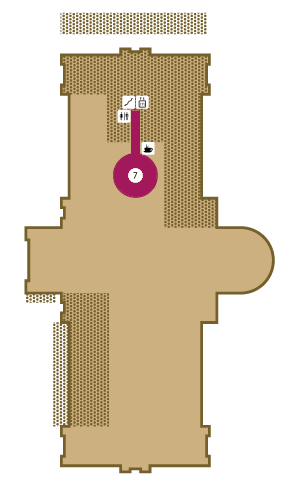The Royal Gallery of Natural History
Established in 1771, the Royal Gallery is a clear example of King Charles III’s interest to cultivate the study of nature. Pedro Franco Dávila (1711-1786) provided the Royal Gallery’s foundational collection and was its first Director. Furthermore, by 1786 he had published the three-volume catalogue of his collections, which became a reliable treaty in Natural Sciences. Dávila was also a member of some of the most important scientific societies of his time, such as the Royal Society, or the Royal Academy of History. The current National Museum of Natural History came to be out of the inheritance of the Royal Gallery of Natural History, which in 1815 changed its name to Royal Museum.
We upgrade the contents of the exhibition on a regular basis, so that visitors may encounter items of great historical value on display for the first time, while enjoying the most emblematic ones which have been showcased over the last years. One of the most well-known specimens is the Asian elephant Elephas maximus. It is one of the oldest naturalised specimens in taxidermy. The skin, prepared in salting by the museum’s taxidermist and drawer Juan Bautista Brú (1742-1799) covers a wooden sculpture commissioned to the sculptor Roberto Michel (1720-1776), who was director of San Fernando Royal Academy of Fine Arts.
One of the most fascinating items recently added to the exhibition is La Osa Hormiguera de Su Majestad 1776, a painting attributed to the renowned artist Francisco de Goya in a paper published in the art magazine Goya. Although the enigmatic oil painting has been part of the Museum holdings since the late 18th century, it is only in recent times that it has been added to the permanent exhibition and is on display for the general public. The full-scale oil-painting of dimensions 105 x 209 cm. portrays the animal slightly curled and showing its left side in a background that depicts the landscape of the city of Madrid at that time. Prior to the launching of the exhibition, the oil-painting was in the office of the MNCN’s director.
One of the key features recently added to the exhibition is a video showing images from various collections and publications of the Royal Gallery that are currently held in the Archive and the Library of the MNCN. Among them, one may find the Van Berkheij and the Pedro Franco Dávila’s collections, the Botanical Expedition to New Spain, the collection of the productions of the seas of Spain, and the collection of prints depicting animals and monsters of the Juan Bautista Brú de Ramón’s Royal Gallery.
This exhibition gives the visitor a chance to understand the historical role of natural sciences, as well as the historical importance of the collections that were started at the former Royal Gallery of National History; curators of those collections were motivated by an extraordinary sensibility towards science, as it was common in Europe at the time. It was our wish to highlight Pedro Franco Dávila’s - the first Director of the Royal Gallery – tremendous work, while taking the visitor to an age of splendor, on an exciting journey through time where the key Museum historical holdings make perfect sense (Esteban Manrique, former MNCN director).
Sótano


